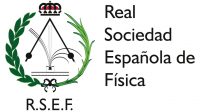El próximo jueves día 30 de junio tendrá lugar la Jornada Científica en Física Aplicada a las Ciencias y las Tecnologías que alberga el Seminario de Doctorandos del Programa de Doctorado en Física Aplicada a las Ciencias y las Tecnologías.
Este año habrán tres charlas invitadas a parte de las sesiones de doctorandos. La primera charla invitada es a cargo de la Dr Nilda Oklay-Vincent editora de la revista Nature Communications con título “Publishing in Nature Portfolio Journals”, la segunda será impartida por Roberto Fernández Fernández egresado del PD en FACyT con título “Is there life after PhD?”, y la tercera será a cargo de Toni Santana con título: “Operating manual on how to find an Earth Trojan asteroid”.
Las conferencias se podrán seguir presencialmente desde la Sala Polivalente del Edificio Nuevos Institutos y a través de Google Meet (https://meet.google.com/wux-addh-pdt).
| Time | Invited Talk |
| 10:00-10:20 | Dr Nilda Oklay-Vincent |
| Publishing in Nature Portfolio Journals | |
| Dr. Nilda Oklay-Vincent, Senior Editor of Nature Communications, will explain the editorial process, as well as the relationship between the Nature journals and provide tips on how to write a successful manuscript for any of the Nature Portfolio journals.
Google Meet Room: https://meet.google.com/wux-addh-pdt |
| Time | Invited Talk |
| 10:20-10:40 | Roberto Fernández Fernández |
| Is there life after PhD? | |
| Roberto Fernández, postdoctoral researcher in the Biomedical Imaging and Instrumentation Group (BiiG) at Universidad Carlos III de Madrid, will share his experience after doing a PhD at Universidad de Alicante and his current research activities as a postdoctoral researcher.
Google Meet Room: https://meet.google.com/wux-addh-pdt |
| Time | Invited Talk |
| 12:00-12:20 | Toni Santana i Ros |
| Operating manual on how to find an Earth Trojan asteroid | |
| Almost every day, we point our telescopes at recently discovered Near-Earth Objects (NEOs) with the aim of enhancing their –still– preliminary orbit. Many of these discoveries are coming from the major surveys in this field, such as Pan-STARRS, the Catalina Sky Survey or ATLAS. In this talk, we will learn about the research performed by researchers of the group of Planetary Sciences of the University of Alicante in their way to discover the second Earth Trojan asteroid.
Google Meet Room: https://meet.google.com/wux-addh-pdt |
El programa completo se encuentra en este enlace.













